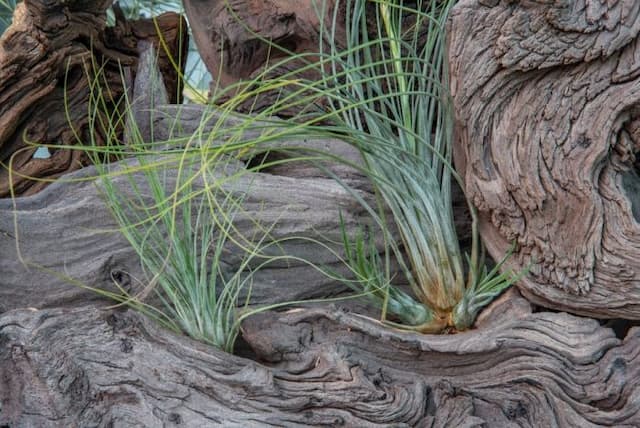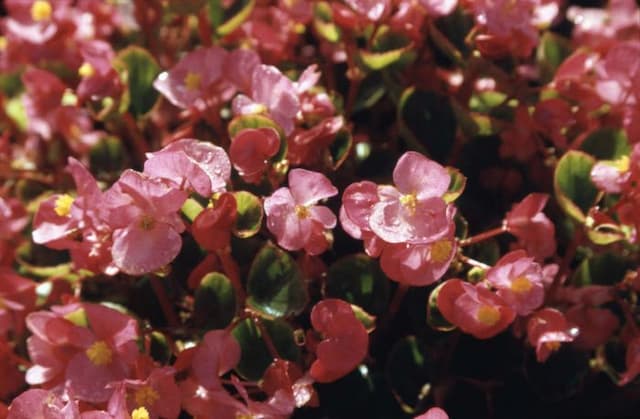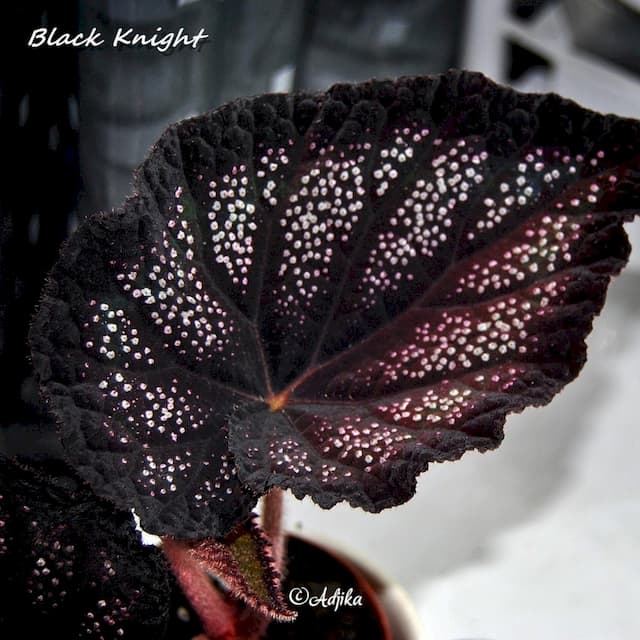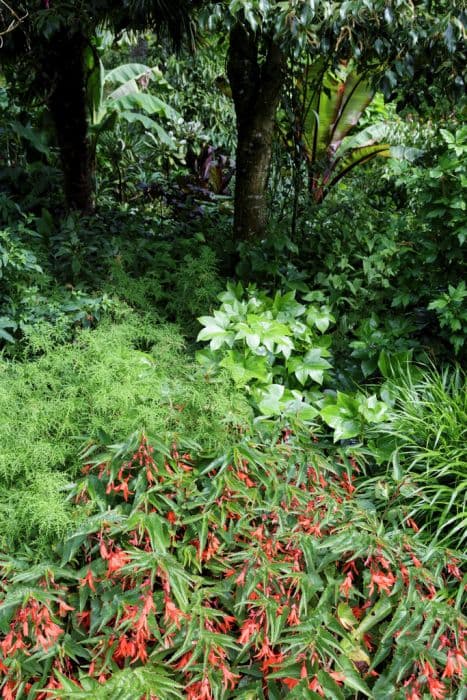Iron Cross begonia Begonia masoniana

ABOUT
B. masoniana is a rhizomatous evergreen perennial to 45cm, with large, ovate, rough-textured green leaves, marked in the centre with a dark brown cross-like zone. Small greenish-white flowers in erect panicles
About this plant
 Names
NamesFamily
Begoniaceae
Synonyms
Iron Cross Begonia, Mason's Begonia
Common names
Begonia masoniana.
 Characteristics
CharacteristicsLife cycle
Perennials
Foliage type
Evergreen
Color of leaves
Mixed
Height
1-2 feet (0.3-0.6 meters)
Spread
1-2 feet (0.3-0.6 meters)
Plant type
Herb
Hardiness zones
11
Native area
Southeast Asia
Benefits
 General Benefits
General Benefits- Aesthetic Appeal: Begonia masoniana, commonly known as the Iron Cross Begonia, has unique foliage with a pattern resembling an iron cross, which adds visual interest to any indoor space.
- Humidity Tolerance: It thrives in environments with higher humidity, making it a suitable plant for terrariums or bathrooms.
- Low Light Adaptability: This plant can tolerate lower light conditions, which makes it versatile for various indoor locations.
- Ease of Care: Iron Cross Begonia is relatively easy to care for, requiring basic watering and feeding, making it suitable for beginner gardeners.
- Mood Enhancer: The vibrant green leaves and interesting patterns can help enhance the mood and create a more vibrant living or working space.
 Medical Properties
Medical PropertiesThis plant is not used for medical purposes.
 Air-purifying Qualities
Air-purifying QualitiesThis plant is not specifically known for air purifying qualities.
 Other Uses
Other Uses- Artistic inspiration: The unique iron cross pattern on the leaves of the Begonia masoniana often inspires artists and designers for various forms of artwork, including fabric patterns and decorative motifs.
- Education: Botany and horticulture educators may use Begonia masoniana to teach about plant propagation, especially leaf-cutting techniques, due to its ease of propagation from leaves.
- Biophilia design: Integrating Begonia masoniana into architecture and interior design can enhance human connection to nature, promoting well-being and reducing stress in indoor environments.
- Photography: The distinctive foliage makes Begonia masoniana a popular subject for plant photographers and enthusiasts, particularly for macro photography.
- Horticultural competitions: Begonia masoniana can be grown and groomed for entry into plant and flower shows due to its unique appearance and the challenge it presents in cultivation.
- Terrariums: Due to its moderate size and high humidity requirements, Begonia masoniana is an ideal plant for creating visually striking terrariums.
- Cultural symbolism: In some cultures, Begonia masoniana might be used as a symbol of uniqueness or perseverance, given its ability to thrive in challenging conditions.
- Thematic gardens: Begonia masoniana can be featured in specialty gardens, such as a pattern-themed garden where the foliage patterns are the main focus.
- Fairy gardens: Its interesting leaf patterns and moderate size make Begonia masoniana an enchanting addition to miniature fairy gardens for whimsical effects.
- Crafts: The leaves of Begonia masoniana can be used as natural stencils or inclusions in papermaking, providing an organic enhancement to crafted items.
Interesting Facts
 Feng Shui
Feng ShuiThe Iron Cross Begonia is not used in Feng Shui practice.
 Zodiac Sign Compitability
Zodiac Sign CompitabilityThe Iron Cross Begonia is not used in astrology practice.
 Plant Symbolism
Plant Symbolism- Caution: Begonia masoniana, commonly known as Iron Cross Begonia, often symbolizes a warning or need for caution, encouraging people to be aware of potential challenges or to tread carefully in certain situations.
- Unique Beauty: With its distinct foliage pattern resembling a green iron cross outlined in red, the Iron Cross Begonia symbolizes uniqueness and beauty that stand out, reminding us to celebrate what makes us and nature diverse and captivating.
- Harmony: The balanced pattern on the leaves of the Iron Cross Begonia can represent harmony, suggesting a sense of balance and stability in life's journey.
- Individuality: The Iron Cross Begonia's unique appearance symbolizes individuality and the idea that being different is something to be embraced rather than shunned.
 Water
WaterThe Iron Cross Begonia should be watered when the top inch of the soil feels dry to the touch, usually every 7 to 10 days, but this can vary based on environmental conditions. Water the plant thoroughly, allowing excess water to drain away, to encourage deep root growth. Adjust waterings during the winter months, as the plant will require less. Use approximately 8 to 16 ounces of water each time for a standard-sized pot, ensuring that the soil is moist but not soggy. It's crucial to avoid letting the plant sit in water, as this can lead to root rot.
 Light
LightIron Cross Begonia thrives in bright, indirect light. The ideal spot for this plant would be near an east or west-facing window where it can receive plenty of light without the harsh direct rays of the sun. Avoid placing it in full shade or direct sunlight, as too little light can cause legginess and too much can cause scorching of the leaves.
 Temperature
TemperatureIron Cross Begonia prefers temperatures between 60°F and 75°F. It is important to keep the plant away from drafts and sudden temperature changes. The plant can survive a minimum temperature of 50°F but sustained cold may damage it. Avoid exposing it to temperatures above 86°F, which can cause heat stress and affect its growth.
 Pruning
PruningPrune the Iron Cross Begonia to maintain its shape and encourage fuller growth. Removing dead or yellowing leaves and spent flowers promotes healthy development and prevents disease. Pruning is best done in the spring or early summer, before the plant enters its active growing phase. Typically, pruning every few months is adequate unless you notice damaged foliage that should be removed promptly.
 Cleaning
CleaningAs needed
 Soil
SoilIron Cross Begonia thrives in a well-draining soil mix with a pH of around 5.5 to 6.5. An ideal mix would contain equal parts of peat, perlite, and pine bark for acidity and drainage.
 Repotting
RepottingIron Cross Begonias should generally be repotted every 2-3 years or when the plant outgrows its container, to ensure continued health and vigor.
 Humidity & Misting
Humidity & MistingIron Cross Begonias prefer high humidity levels, ideally between 60-70%, to thrive and maintain their lush foliage.
 Suitable locations
Suitable locationsIndoor
Place Iron Cross Begonia in bright, indirect light and keep soil moist.
Outdoor
Grow Iron Cross Begonia in shade and protect from cold temperatures.
Hardiness zone
10-11 USDA
 Life cycle
Life cycleThe life cycle of Begonia masoniana, commonly known as Iron Cross Begonia, starts with seed germination, where under optimal conditions, tiny seeds develop into small seedlings. The seedlings then grow into juvenile plants, developing the characteristic patterned foliage with a rough, pebbly texture. As it matures, Iron Cross Begonia enters the vegetative stage, where it focuses on leaf growth and strengthening the stem structure in controlled or consistent climates. The plant eventually reaches adulthood and begins the reproductive phase with the production of clusters of small, inconspicuous flowers, although flowering is not as prominent or as often celebrated in this species. After pollination, seeds are produced, allowing for the continuation of the species if conditions allow. Throughout its life, Iron Cross Begonia may undergo periods of dormancy, typically in response to seasonal changes or adverse environmental conditions, where growth slows until more favorable conditions return.
 Propogation
PropogationPropogation time
Spring-Early Summer
The Iron Cross Begonia, scientifically known as Begonia masoniana, finds its ideal propagation time in the spring and summer months. The most popular method employed for propagating this species is through leaf cuttings. This involves selecting a healthy leaf with a visible vein pattern and cutting it into wedges that include at least one vein. Each wedge is then placed on moist potting mix with the vein side down. To facilitate growth, the environment should retain high humidity, which can be achieved by covering the cuttings with a plastic dome or using a propagation case. In suitable conditions, roots will develop from the veins, and eventually, new plants will sprout. This method is effective and allows gardeners to produce several plants from a single leaf.



![Begonia [Allure]](/_next/image?url=https%3A%2F%2Fplants-admin.emdemapps.com%2Fimages%2Fplants%2F%2Fimages%2F604b5b9006ab9.png&w=640&q=75)





